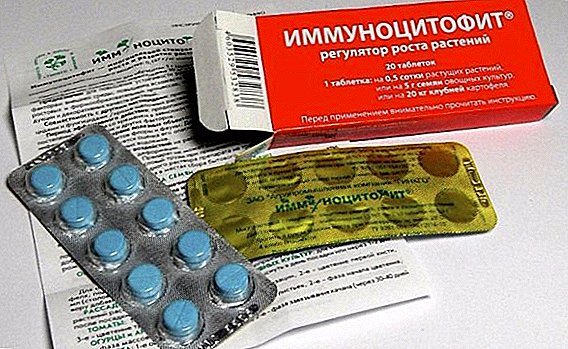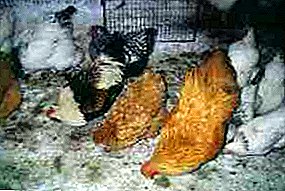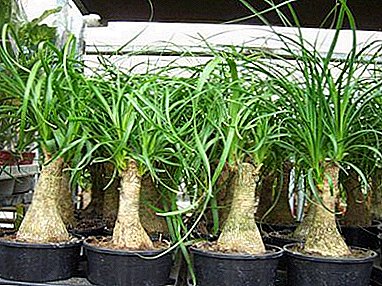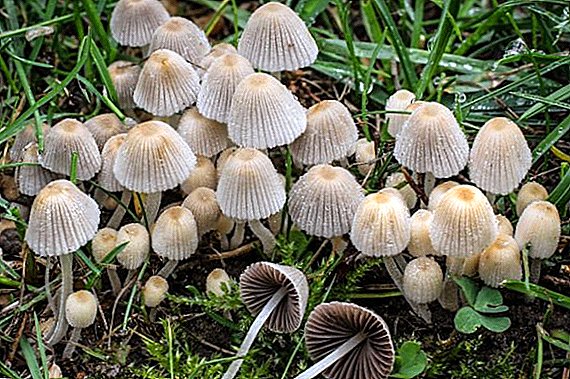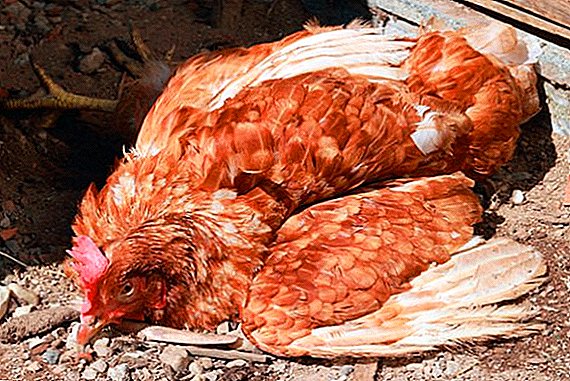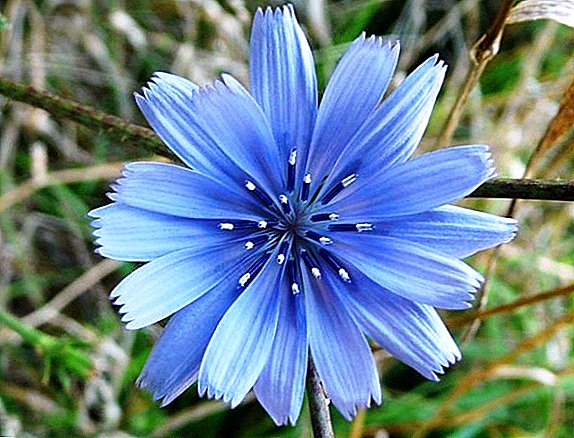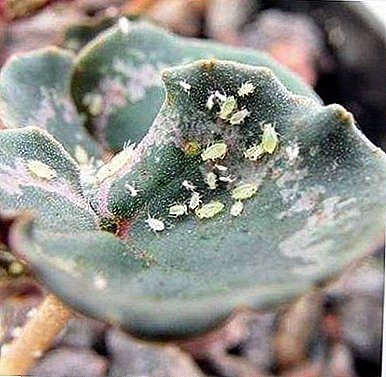
Cyclamen is a rather tender flower that needs especially careful care and increased owners' attention to the appearance of diseases and pests.
This plant, unlike many room fellows, does not stop growing and flowering in the winter period of time, therefore it is attacked by insects in the winter months.
Further in the article the main diseases caused by various pests and their treatment methods will be considered.
Causes of insects on the flower
The most common causes of the appearance of pests on cyclamen is improper care and unfavorable conditions for its maintenance.
- Harmful organisms attack a flower under the wrong temperature conditions, light and humidity.
- Excessive or insufficient watering of plants, improperly selected substrate, the presence of drafts, unbalanced feeding also provoke the appearance of insect pests.
- Often, the pests enter the premises of a flower purchased at the store. Therefore, it is important to inspect all parts of the plant for the presence of insects before buying.
- In spring and summer, the indoor flower is often carried to the balcony and the loggia, where it can also become infected with insects.
- The soil for transplanting, taken from open ground, can be dangerous for the plant, since it can contain pupae and larvae of pests.
Attention! Since most pests multiply very quickly and in large quantities, even a few unnoticed individuals in time are a threat to a delicate home flower.
Main parasites: description, photo and fight with them
Aphid
Aphid is the most common and pesky pest that can be handled relatively easily if you immediately notice and take all the necessary measures to destroy it. Most often, aphid gets on the plant from the street through the window or window when airing.
This is a small wingless insect of 1.4 - 2.5 mm in length. The color of their bodies can be gray, green, orange and black. Aphids feed on cyclamen soft tissue juice.
Most insects love buds, young leaves and flower shoots.
Signs:
- The flower stops growing.
- The leaves begin to deform and curl, turn yellow and fall off.
- Buds and flowers begin to dry and fall off.
- A sticky coating appears on the plant on all its parts. Thanks to this liquid, a sooty black fungus is formed on the underside of the leaf plates, greatly aggravating the gas exchange and greatly spoiling the entire appearance of the cyclamen.
Methods of struggle:
- Isolate the cyclamen from other indoor plants.
- Wash the plant under running warm water, wipe the leaves with a damp cloth moistened with soapy water.
- Treat insecticides: "Aktara", "Aktellik" "Confidor" or "Agravertin".
- You can spray the plant with folk remedies: decoctions of onion peel, orange peels, Christmas tree needles, nettle, yarrow, etc.

Shchitovka
This is a very small insect, similar to a drop, with a diameter of 2 to 5 mm with a hard shell (shield), because of which it is often compared to a turtle. This parasite spreads throughout the plant: the stem, leaves, buds.
Shchitovka sucks the flower juice, depriving him of the trace elements necessary for proper growth and development.
Adult female shchitovok immobile, and young larvae without shields actively move, crawling from one plant to another. They are difficult to detect at the early stage of plant infection, as they are hidden in the leaf axils and under the leaves and masked as specks.
Males of this species are even more dangerous. Thanks to their wings, they fly overcoming tens of meters with ease and spreading the population to neighboring plants. They resemble clumps of white dust.
Infected flowers are infected with flaps, which have an excessive nitrogen content and a metabolic disorder due to improper care:
- improper watering;
- insufficient lighting;
- too hot or cold air.
Signs:
- On the leaves of cyclamen appears sticky pad.
- The leaves turn yellow, dry. You can find out about other causes of yellowing of leaves and flaccidity of a flower here.
- Young shoots cease to grow.
- Falling flowers and buds.
Methods of struggle:
- Remove insects from flower using a cotton swab moistened with soapy water. It is necessary to carefully treat all parts of the plant and remove all shields.
- Apply insecticides - Aktar or Bankol and place the plant under the film for 1 hour.
- Repeat this procedure every 3-4 days for two weeks.
- Place the infected plant in quarantine, and thoroughly clean the site of infection with soap and water.

Thrips
Quite often cyclamens are attacked by thrips, small black insects about 2 mm long, which resemble a spindle in their shape, and have growths in the form of bubbles on their paws. There are also gray and brown.
These pests affect the entire aboveground part of the plant: buds, flowers, leaves and stems. They are very hardy and persistent creatures and very ancient, some entomologists consider them to be the ancestors of the klopochids. Their appearance contributes to hot air and low humidity.
Signs:
- Dots, dashes, punctures and small bright specks are clearly visible on the leaves and stems.
- The plant becomes colorless.
- A grayish-brown tint appears on the upper side of the leaf plates, and brown-brown spots on the lower side.
- The edges of the leaves are deformed, twisted (for what reasons can the leaves twist and what to do about it?).
- Flowers and buds wither, dry and fall.
Control measures:
- The diseased plant must be urgently isolated and transplanted into a new substrate, pre-washing the roots and tuber in a light solution of potassium permanganate.
- To treat cyclamen with insecticides: "Aktara", "Intavir", "Aktelik", "Fitoverm", "Karbofos". Processing should be carried out 1 time per week 3 times a day.
- Thrips do not tolerate the smell of garlic, so you can spray the plant with appropriate infusion or simply lay out sliced slices next to it.

Cyclamen mite
Microscopic insect length from 1-3 mm. He has a yellowish body and 4 pairs of legs. Appears when the air is too dry and the temperature is too high.
Signs:
- A dusty deposit appears on different parts of the plant, which is clearly visible in the folds of young leaves and on flowering buds.
- The edges of the sheet plates are deformed.
- Fade and drop buds.
- Twisted stems.
Methods of struggle:
- All affected buds, flowers and leaves are removed.
- Chemicals: "Fitoverm", "Inta-vir", "Decis", "Iskra", "Neoron", "Kinmiks" or "Karate".
- Folk remedies: an ash-soap solution, infusions from potato tops, citrus peels, onion peels and garlic and others.
If the time has already been missed and the tick multiplied strongly, you can try to save the plant by cutting.

Flower disease prevention
To avoid unpleasant situations with the appearance of pests on the flower, follow these rules:
- Carefully inspect existing and newly acquired plants for pests.
- Buy only healthy and high-quality planting material from reliable suppliers in specialized stores.
- Isolate damaged flowers from healthy plants.
- Disinfect dishes and soil before planting and changing a flower.
- Significantly increase the resistance of cyclamens to pests regular and proper watering, airing the room, competent mode of fertilizing and lighting.
Conclusion
As a rule, pests often attack damaged or weakened flowers. The appearance of any insects at home threatens them with rapid reproduction and resettlement to other plants. Therefore, we must try to prevent their occurrence and quickly respond to the first signs of their vital activity.


